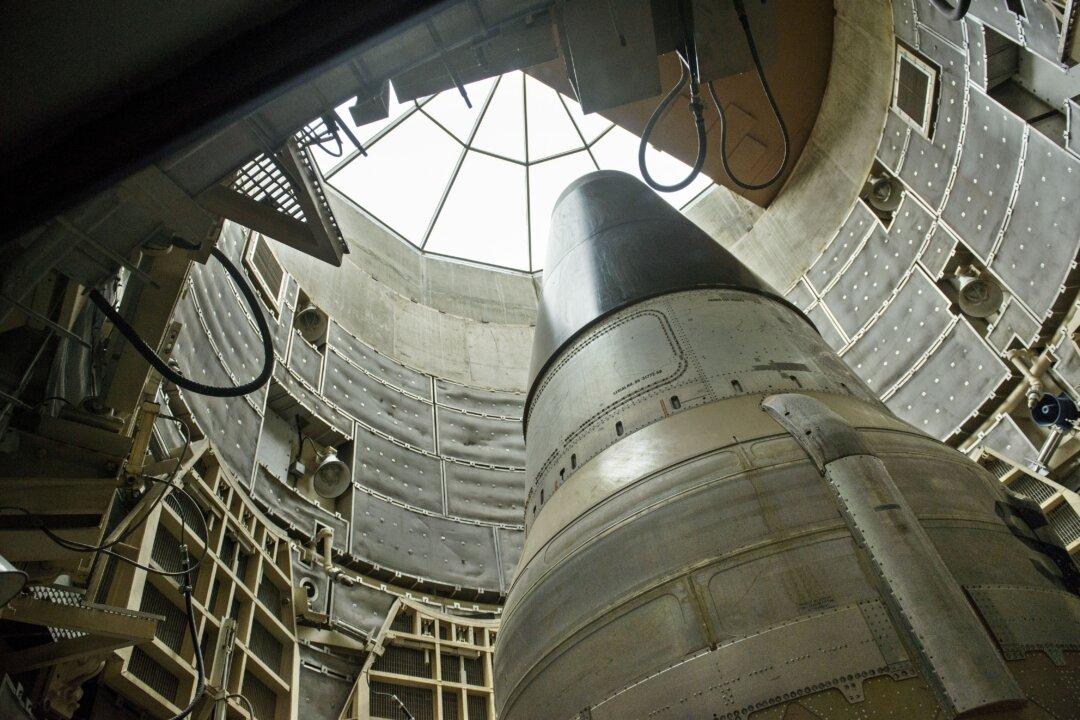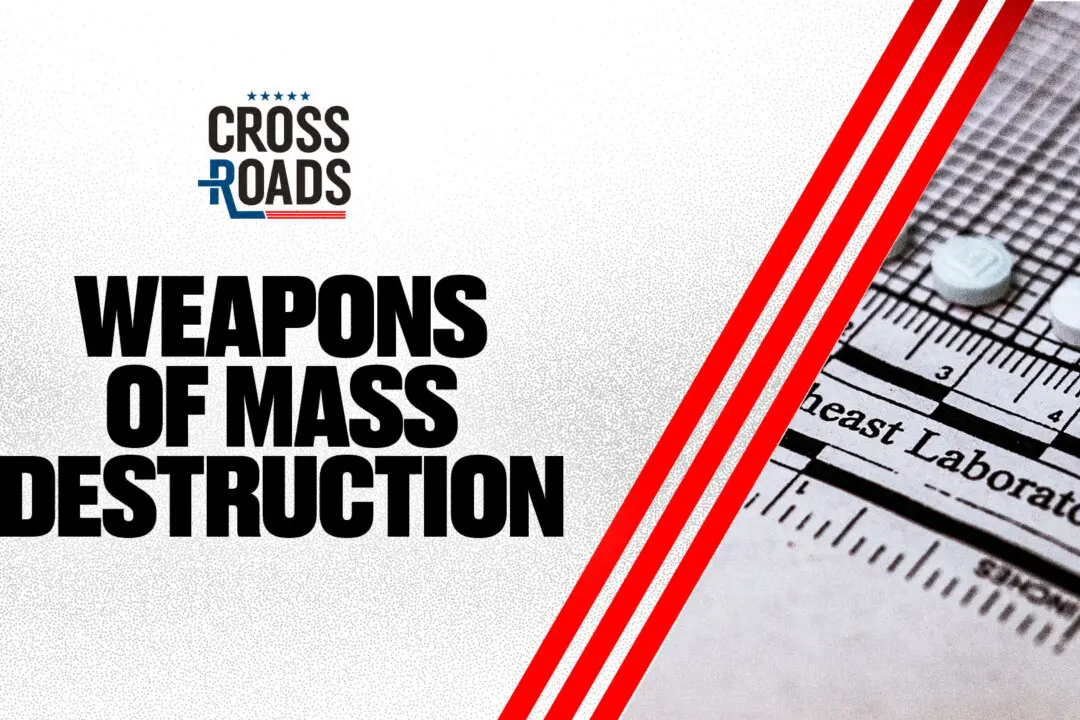The United States has a growing weakness in its nuclear arsenal of defensive intercontinental ballistic missiles (ICBMs), and some experts warn the gap is a serious vulnerability in U.S. defenses.
“Right now, the American land-based ICBM force is particularly vulnerable because it is over targeted by Russian and Chinese ICBMs,” said Richard Fisher, senior fellow at the International Assessment and Strategy Center, in a phone interview.
The problem, he said, is that U.S. nuclear weapons sites have moved little since the Cold War. Plans to create mobile defense systems that can be moved and hidden were likewise scrapped in efforts to reduce the U.S. nuclear arsenal.
“We’re just not hiding them,” Fisher said, noting that even a hobbyist using Google Earth could spot most of the land-based nuclear sites in the United States.
With China, in particular, the opposite is true, and much of its nuclear force is hidden away in forests and underground bases. In the nuclear defensive arena where the only “security” is the assurance of mutual annihilation, the idea that someone could destroy a nation’s nuclear weapons and have enough left over to destroy its population centers isn’t an idea that’s taken lightly.
“If you look at new Chinese bases, it is quite easy to conclude that China is building up to the capability to pre-emptively strike our ICMB fields,” Fisher said.
“We are on the road toward a near-term scenario in which we will be vulnerable to strategic blackmail,” he said.
Pre-Emptive Attack
Fisher isn’t alone in his concern. A secret chapter from Australia’s 2009 Defense “White Paper” was leaked in a 2012 book by Australian journalist David Uren, “The Kingdom and the Quarry: China, Australia, Fear and Greed.”
News of the chapter caused a stir in Australia, where its leading newspaper, The Australian, ran a front-page story with the headline “Secret ‘War’ With China Uncovered.”
It caused much less of a stir in the United States, even though its release came just several months after President Barack Obama announced the “Asia Pivot” aimed at countering China’s new assertiveness. But its content very well should have. The leaked chapter detailed the Chinese regime’s plan for military action against the United States.
The first step in the plan, it states, was to “blind the U.S. surveillance and reconnaissance systems and damage command, control, and communications networks with cyber, missile, and space attacks.”
“Then launch large pre-emptive attacks on U.S. and Japanese bases and forces with missiles, aircraft, and special force raids, possibly extending to facilities in Australia,” it states.
And while this unfolded, “There would be multiple missile and submarine attacks on U.S. naval vessels. Finally, PLA [People’s Liberation Army] units would aim to destroy more distant support forces from Hawaii to Alaska, Singapore, and Australia.”
The overall goal of such an attack, the document stated, would be a scenario much like what Fisher warned the United States is becoming vulnerable to: that the Chinese regime would launch an all-in, aggressive attack meant to force the United States to the negotiation table within a short time-frame.
A Credible Threat
Fisher said, “It is not inconceivable that in a crisis or should a strategic opportunity present itself, that Russia and China would join forces in presenting a threat to Washington that would require a major strategic defeat or concession from Washington.”
“The United States is now vulnerable to multiple, very real threat vectors,” he said. “Quite frankly, one cannot conclude that our national leadership is capable of responding sufficiently to protecting the United States.”
An attack meant to force the United States to the negotiation table might unfortunately be possible due to revisions in U.S. nuclear strategy.
The U.S. strategy for nuclear war between 1961 and 2003 was called the Single Integrated Operations Plan (SIOP). It was replaced by the Operations Plan (OPLAN), which was last updated in December 2008.





